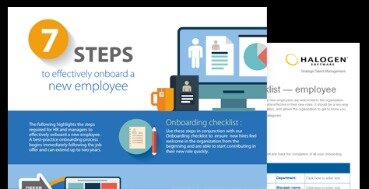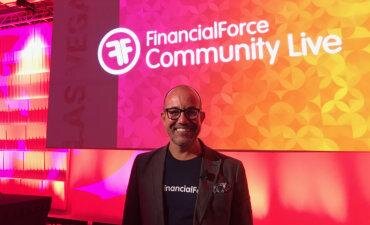What is Budgeting? Types, Process, Real Examples
Category : Bookkeeping

A budget, also known as cash flow, is arguably more important than the actual cash that you have in your bank and investment accounts. The process begins by establishing assumptions for the upcoming budget period. These assumptions are related to projected sales trends, cost trends, and the overall economic outlook of the market, industry, or sector.
It’s easier to accumulate this financial cushion if you know the amount you’re bringing in and spending each month, which can be monitored with a budget. Without knowing your cash flow, you could be putting yourself into a bad financial situation and not even know it. You can only get by without knowing your cash flow for so long before you get into financial trouble, so make the time you know the flow of your cash. Budgeting should be something that everyone does, regardless of their financial situation.
- Creates the budget for the upcoming period by adding or subtracting a percentage from the previous period using historical data.
- We want buy-in and acceptance from the entire organization in the budgeting process, but we also want a well-defined budget and one that is not manipulated by people.
- Periodic forecasts typically only project to the end of the current fiscal year.
It is an integral part of such managerial policies as long-range planning, cash flow, capital expenditure and project management. If the sales-volume variance is unfavorable (flexible budget is less than static budget), the company’s sales (or production with a production volume variance) will turn out to be less than anticipated. As stated earlier, variances can arise between the static budget and the actual results. The two common variances are called the flexible budget variance and sales-volume variance. We want buy-in and acceptance from the entire organization in the budgeting process, but we also want a well-defined budget and one that is not manipulated by people. There is always a trade-off between goal congruence and involvement.
What is Cost Accounting?
While budgets are most commonly found within organizations, they are also quite applicable to individuals. Since most people have constrained income amounts, it is helpful to set up an expense budget that itemizes how much they can spend without going into debt. Also, the budgeted costs of a customer service department may be compared with actual costs each month to point to areas where greater cost control is required.

A program budget is a budget for a specific program or activity such as research and development, engineering, training, marketing, or public relations. As program budgets are typically generated for activities across multiple departments these budgets cannot be used for control purposes. Apart from businesses, individuals use budgeting to plan their expenses and meet their financial goals. Following are the rules that individuals can follow to make an effective financial plan.
It Provides a Pivotable Plan
Top management’s support and cooperation is essential for successful implementation of the budget. In order to achieve competitive edge over its rivals on sustainable basis, an organization will have to develop new products or new processes for producing existing products at minimum cost. Thus, the organization has to incur expenditure on research and development effort.
How to Choose the Right Accounting & Budgeting Software for Your … – Fagen wasanni
How to Choose the Right Accounting & Budgeting Software for Your ….
Posted: Mon, 31 Jul 2023 06:03:33 GMT [source]
Budgeting software also contains controls that prevent a budget model from being tampered with by an unauthorized user. The word budget often conjures up images of complicated financial documents. But it’s a tool that can be used by various entities, including governments, businesses, and individuals/households of every income level. Once you have these key points under your belt, you’ll be better prepared at securing your financial future. Just like budgets help people, corporate budgeting help keep businesses stay on track. They also help business leaders make very important (investment) decisions, manage and meet goals and objectives, and identify any hurdles that come their way.
Review Spending
Operating budgets are used in daily operations and serve as the basis for financial budgets. The budgeting process for companies can be challenging, particularly if customers don’t pay on time or revenue and sales are intermittent. There are several types of budgets that companies use, including operating budgets and master budgets as well as static and flexible budgets. In this article, we explore how companies approach budgeting as well as how companies deal with missing their budgets.
This will enable the management to compare the actual level of operations with the expected performance at that level. Individual employees should be informed about expectations of the management. Only those costs over which an individual has predominant control should be used in evaluating performance of that individual. Once materials cost budget, labour cost budget and overheads budget are prepared, a full production cost budget can be drawn.
182 women hospital and health system CFOs to know 2023 – Becker’s Hospital Review
182 women hospital and health system CFOs to know 2023.
Posted: Tue, 01 Aug 2023 17:47:14 GMT [source]
Other department budgets are then estimated, along with expenditure levels for research and development, as well as asset purchases. These budgets are then rolled up into a master budget, from which estimates are made for the financing requirements of the business over the span of the budget period. The outcome may be run through several iterations before a reasonable budget model is created.
What is Financial Budgeting and Forecasting?
Go over all your bills to see what must be paid first and then set up a payment schedule based on your paydays. You will want to leave yourself some catch-up time if some of your bills are already late. Don’t be afraid to request bill extensions or payment plans from creditors.

It does however take a considerable amount of time to develop compared to a static budget. These schedules are used to accumulate statewide totals for expenditures and revenues for the past, current, and budget years and to produce summary schedules included in the Governor’s Budget. retention legal definition of retention Budgeting is an essential tool for financial planning that can help individuals and businesses avoid financial pitfalls that can eventually lead to bankruptcy. Thus, it is crucial to regularly review and adjust budgets to reflect changes in income, expenses, and financial goals.
Determination of material cost involves quantities to be used and the rate per unit. The task of determining the quantities required is that of the production engineering department while the purchasing department has the responsibility of deciding the rate. The overall purpose of budgeting is to plan different phases of business operations, coordinate activities of different departments of the firm and to ensure effective control over it.
Financial Budget
Many contributors spending time editing many spreadsheets means that aggregation and data entry will be lengthy, error-ridden tasks. Finance automation tools render this manual sorting of budgeting data unnecessary. Many large companies employ a committee of multiple budget owners charged with ensuring that the budget is followed.

The inflows and outflows of cash for a company are important because expenses need to be paid on time from the cash generated. For example, monitoring the collection of accounts receivables, which is money owed by customers, can help companies forecast the cash due in a particular period. Also known as a fixed budget, this is the budget at the expected capacity level.
That includes outlining your income, account balances and debts, and tracking expenses. Then, identify your priorities and find the right budget system for your needs. As a result, Coca-Cola has increased the recycled content in its packaging and reduced its carbon footprint. Thus, through its budgeting process, Coca-Cola was able to allocate the necessary resources to achieve these sustainability goals. Once prepared, the capital budget provides a guide for investing in future fixed assets as well as arranging for the financing of the projects. Starting from the initial planning stage, the company goes through a series of stages to finally implement the budget.
If you constantly look at what you have to cut and give up, the very act of budgeting becomes distasteful. A mixture of long- and short-term gifts to yourself will help keep you motivated. You don’t have to use cash exclusively or completely forgo online payments, but handling transactions in old-fashioned ways can make you realize how much you’re spending and enhance the power of self-regulation. The point of the budget is to keep you out of overwhelming debt and help you build a financial future that will give you more freedom, not less. So think about how you want your future to be and remember that keeping to your budget will help you get there. Adding to your debt load, on the other hand, will mean that your future could be even tighter.
Participative budgeting is a roll-up approach where employees work from the bottom up to recommend targets to the executives. The executives may provide some input, but they more or less take the recommendations as given by department managers and other employees (within reason, of course). Operations are treated as autonomous subsidiaries and are given a lot of freedom to set up the budget. Decisions about production, hiring, and selling effort are components of operating plans. Once you’ve gone through these steps, monitor your progress for a few months. You can do this by writing everything you spend in a notebook, via budgeting apps on your phone, or with the software you used in step 4 to review your spending.
Using this method, the production managers strive to minimize the waste on one hand and maximize the productivity on the other side. Cost Accounting is a domain of the internal department of a company. They analyze the cost of producing goods and services and how they are contributing to the growth of a company. Moreover, it helps companies decide from where the costs can be reduced to increase profits or reduce prices. If you can, though, keep your receipts and average out how much you spend each month when you build your monthly budget.

